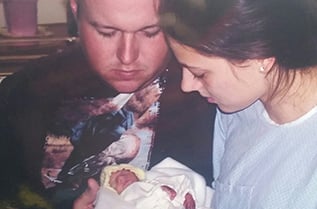This biochemical test is a quantitative measurement of galactocerebrosidase enzyme activity and can be used as a 1st tier test for patients with a clinical suspicion of Krabbe disease. Demonstration of deficient galactocerebrosidase enzyme activity is considered the gold standard to confirm a diagnosis of Krabbe disease.
2 Weeks
82657
$200
Krabbe disease leads to the accumulation of galactosylceramide specifically in brain white matter, causing a neurological phenotype. Patients with the severe, infantile form of Krabbe disease will typically present by 3-6 months of age with rapidly progressive neurodegeneration, muscle rigidity, seizures, irritability, vomiting, and blindness and/or deafness. Approximately 10-15% of cases exhibit a milder, late onset clinical phenotype, with patients presenting with general weakness or stiffness, ataxia, vision loss, and some intellectual regression.
4-methylumbelliferyl substrate
Krabbe disease enzyme analysis is performed on dried blood spots. A minimum of three circles need to be filled in. Each circle should contain one drop of blood (about 100 microliters). See the link below for additional sample collection and handling instructions. A whole blood sample (3-5 ml) in a green top, sodium heparin tube can also be submitted for this test. The laboratory will create a DBS card from the tube of blood when the specimen arrives.
For a dried blood spot: When the sample has dried 3-4 hours, fold cover at score line, over sample, and tuck into flap. Whole blood samples should be sent at ambient temperature and must arrive to the laboratory within 24 hours of specimen collection.
Call our laboratory at 1-800-473-9411 or contact one of our Laboratory Genetic Counselors for assistance.
Robin Fletcher, MS, CGC
Falecia Thomas, MS, CGC
Alex Finley, MS, CGC
